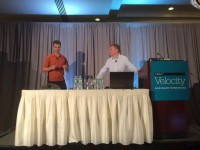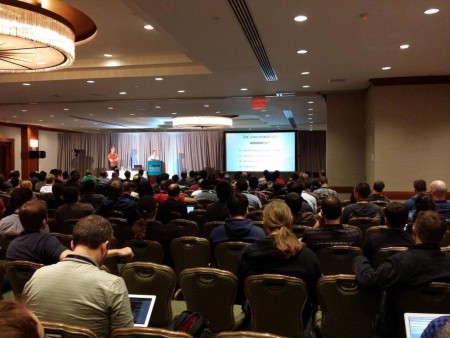Tuesday October 13th 2015 I co-presented a talk at the Velocity conference in NYC together with Ragnar Lönn of Loadimpact. Ragnar is a friend of mine and another Swede.
 The presentation was split up in two parts, in which I laid out the foundations of HTTP/2 in the first part, and Ragnar then presented the results of his performance study in the second part.
The presentation was split up in two parts, in which I laid out the foundations of HTTP/2 in the first part, and Ragnar then presented the results of his performance study in the second part.
I think an interesting take away from the study is the following.
Existing sites are usually having a lot of resources that need to get downloaded. An average site has around one hundred now and the number is increasing. Those resources often have dependencies or trigger subsequent transfers. Like a HTML file gets parsed and then a CSS file is downloaded and once the CSS is downloaded it gets parsed and images specified in there are downloaded. It easily gets even more “steps” like that when downloading javascript, that triggers more javascript that renders parts of the page that causes more resources to get downloaded.
Nothing new there, right? But when switching a site like that over to HTTP/2 the performance gain will be capped at a certain percentage no matter how large latency you have to the site because what limits such a site to perform well is the time it takes to get to the end of the slowest “dependency chain”. It is less of an issue with HTTP/1.1 since if the resources are from the same site, browsers won’t do more than 6 requests in parallel anyway (on the 6 separate TCP connections it’ll use).
It becomes evident that in order to make such a site really benefit from HTTP/2, the site would have to be modified ever so slightly so that it would deliver its contents with shorter chains and allow the browsers to get more of the resources earlier, in parallel rather than serially.
The actual talk
Splitting up a presentation in two parts with two talkers is more difficult than doing it yourself. I think we did a decent job and we ended the presentation early. It enabled us to answer to a lot of questions and we were actually quite bombarded with them – all relevant and well considered and I think we managed to bring more to the room thanks to them. A lot of the questions were about more generic HTTP/2 and deployments though and not all exactly about the performance study of the presentation.
The audience gave us an average score of 3.74 out of 5. Not too shabby. The room seated 360 persons but it wasn’t completely filled up.

